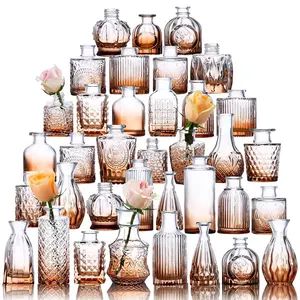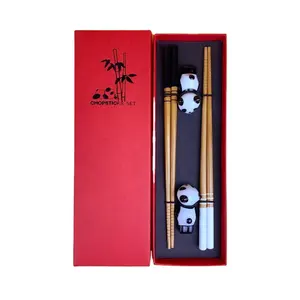Popular in your industry










































































Related Searches:































































































































Top categories
About garden stake connectors
A garden stake connector is a pivotal element for erecting and upholding garden structures. These connectors are adept at affixing garden stakes, which serve as supports for plants, the basis for trellises, and the skeleton for an array of plant support systems. Their versatility is matched by a range of materials, from PP, PE, PVC, to stainless steel, iron, aluminum, and ABS, meeting the varied demands of commercial clients from supermarkets to online retailers.
Types and Materials of Garden Stake Connectors
Available in multiple forms, garden stake connectors are tailored for distinct uses and stake compositions. Plastic variants, crafted from resilient PP or ABS, are pliable and weather-resistant, making them suitable for the outdoors. Metal options, such as stainless steel or aluminum, deliver sturdy support for weightier structures. Color choices like green and white enable seamless integration with garden motifs or inconspicuous backing within the greenery. The assortment includes specialized connectors for certain crops, such as tomatoes, featuring adjustable and scalable properties to support and adapt to the growth of these plants. Moreover, these connectors often incorporate interlocking features that bolster the stability of garden edifices, ensuring they endure through weather and the burden of maturing vegetation.
Structural Design and Functionality
The engineering behind garden stake connectors is essential to their purpose. They are constructed to secure stakes tightly, with certain designs permitting adjustable angles and placements. This adaptability proves invaluable for custom plant support structures like tomato cages or trellises. The connectors are crafted for straightforward assembly and can be employed to augment or alter existing frameworks without specialized equipment. Their design elements include clasping mechanisms, modifiable joints, and occasionally telescopic arms, all working in concert to ensure a firm and supportive framework for garden stakes. These elements are typically designed for user-friendliness, allowing for swift setup and adjustment by gardeners.
Materials and Their Properties
The selection of materials for garden stake connectors is based on their sturdiness, pliability, and resistance to environmental stressors. PP and ABS plastics are preferred for their durability and UV resistance, which shields them from solar degradation. Stainless steel and aluminum are chosen for their robustness and immunity to rust, vital for outdoor settings. Each material offers distinct advantages, such as aluminum's lightness, facilitating handling, or plastic's cost-effectiveness, broadening accessibility to various users.
Business Usages and Applications
Garden stake connectors find their place in diverse environments, from private gardens to expansive commercial farms. They are indispensable in retail spaces like specialty shops and garden centers. Their utility spans indoor and outdoor areas, including patios and greenhouses, making them a versatile offering for department stores, hotels, and souvenir shops catering to gardening aficionados. In the realm of commercial agriculture, these connectors are instrumental in constructing large-scale plant support systems, key to enhancing crop production and streamlining farming operations. They are also a crucial asset for landscapers and garden designers, who depend on them to forge both functional and visually appealing garden structures.
Functions and Tasks
The chief role of garden stake connectors is to ensure a firm junction for garden stakes, facilitating the creation of diverse plant support structures. They are engineered to assist in tasks such as bolstering growing plants, erecting pest barriers, and constituting the core of ornamental garden elements. The connectors also lend themselves to repairing or expanding existing frameworks, offering a versatile solution for continuous garden upkeep.
Distinctive Features and Selling Points
Notable attributes of garden stake connectors encompass their compatibility with various stake sizes, resilience to differing climatic conditions, and the simplicity of their assembly process. Unique selling propositions may include innovative design elements like tool-free lock-in mechanisms or the adoption of eco-friendly materials that resonate with eco-conscious consumers. These features distinguish them from competitors by providing additional convenience and sustainability.
Benefits and Positive Outcomes
Employing garden stake connectors yields multiple advantages, such as effortless assembly, longevity, and the capacity to engineer a multitude of plant support structures. They are particularly advantageous for commercial purchasers aiming to supply a product that elevates the gardening experience by streamlining the construction and maintenance of garden frameworks. The positive impacts include enhanced plant vitality due to proper support, increased garden productivity, and the ability to devise customized garden layouts that can evolve with changing requirements over time.
How to Choose the Right Garden Stake Connectors?
In choosing the appropriate garden stake connectors, it is crucial to consider the compatibility with the garden stakes, the environmental conditions they will face, and the specific support needs of the plants. Opt for connectors that strike an optimal balance between flexibility and sturdiness to guarantee the longevity and efficacy of the garden structure. For example, stainless steel connectors may be preferable for heavy-duty use, whereas plastic connectors might be apt for temporary or lighter applications.
How to Install Garden Stake Connectors?
Setting up garden stake connectors is generally a simple process. Start by positioning the stakes as desired, then slot the ends into the connectors' openings or clasps. Some connectors may necessitate further securing, such as twisting or locking actions, to ensure a solid edifice. It is always advisable to adhere to the manufacturer's guidelines for optimal results.
How to Maintain Garden Stake Connectors?
To maintain garden stake connectors, conduct regular inspections to verify their secure attachment and absence of wear. For plastic connectors, a gentle soap and water cleanse is typically adequate, while metal connectors might need occasional treatments to avert rust or corrosion, particularly if composed of iron.
What are the common uses for garden stake connectors?
garden stake connectors are commonly employed in the construction of plant supports, trellises, and protective enclosures. They are especially favored for cultivating climbing plants such as tomatoes, beans, and cucumbers, and for crafting decorative garden features and practical space management solutions in both residential and commercial gardens.
Can garden stake connectors be reused?
Indeed, garden stake connectors are crafted for multiple uses. Their robustness and weather resistance permit them to be disassembled and repurposed across numerous growing cycles, rendering them an economical and eco-friendly option for gardeners and commercial entities alike.
Are garden stake connectors suitable for all types of gardens?
garden stake connectors are apt for an extensive array of garden varieties, from vegetable plots and flower beds to indoor hydroponic systems. Their adaptability to diverse settings and plant needs renders them an essential implement for gardeners and landscape architects.













































